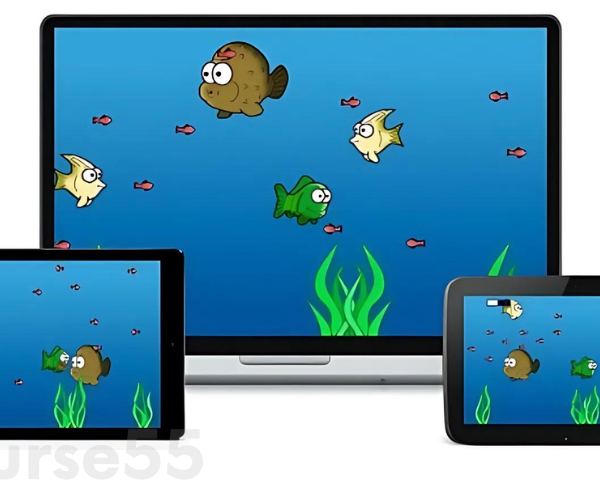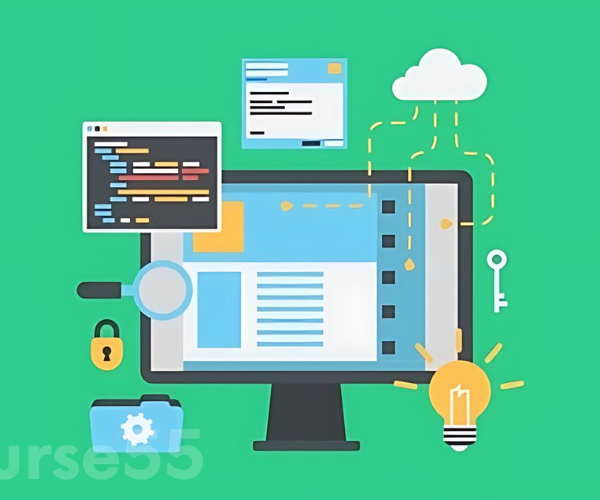-
×
 Perfecting Pinterest - Sophia Lee
1 × $31.00
Perfecting Pinterest - Sophia Lee
1 × $31.00
Body Language in the Workplace By Stone River eLearning
$49.00 $15.00
SKU: C55.522205kOnkH
Category: Education
Tags: Body Language, Body Language in the Workplace, Stone River Elearning
Unlocking Nonverbal Communication: A Review of Body Language in the Workplace
Content Proof:
In the realm of professional interactions, the subtle dance of body language often speaks volumes, often eclipsing the spoken word. The course “Body Language in the Workplace,” offered by Stone River eLearning, embarks on an insightful journey into the world of nonverbal communication. It meticulously unpacks the nuances of gestures, facial expressions, and posture, all while emphasizing the pivotal role each component plays in our daily professional exchanges. As we navigate through this exploration, we will uncover the fundamental principles that underlie effective communication and how awareness of these can transform workplace dynamics for the better.
Understanding Body Language
The Importance of Nonverbal Communication
Body language encompasses a wide spectrum of nonverbal cues that individuals display in various settings. According to studies conducted by leading communication theorists, it is estimated that as much as 93% of communication effectiveness depends on nonverbal elements. This overwhelming ratio suggests that understanding body language is not just advantageous it is essential for anyone navigating workplace interactions.
In this course, participants delve into the intricate layers of nonverbal behavior and learn how certain gestures can convey confidence, warmth, or even hostility. For instance, maintaining eye contact can signal confidence and sincerity, while crossed arms might indicate defensiveness or resistance. By understanding these subtleties, learners are equipped to interpret the emotional states and attitudes of colleagues and clients alike.
Key Components of Body Language:
- Gestures: Deliberate movements which can illustrate or emphasize a verbal message.
- Facial Expressions: Vital for conveying emotions, often presenting genuine feelings that contradict spoken words.
- Posture: The way we sit or stand represents our level of engagement and confidence.
The Psychological Underpinning of Body Language
Understanding body language is not merely a skill it taps into the very essence of human interaction. As Dr. Albert Mehrabian, a pioneer in the study of nonverbal communication, famously posited, the emotional nuances we convey are rooted deeply in our physiological responses. For example, during a stressful meeting, an individual may exhibit body language that suggests discomfort, such as touching their neck or fidgeting with their hands. By identifying these signals, participants in the course learn how to adjust their responses, fostering a more harmonious dialogue amid tension.
Additionally, the course provides real-life examples and illustrative scenarios that resonate with many professionals. Consider a job interview setting; a candidate’s slumped shoulders and lack of eye contact can drastically negate their qualifications, overshadowing their skills and experience. This practical application reinforces why mastering body language is imperative, especially in high-stakes situations.
Practical Applications of Body Language
Utilizing Body Language in Different Scenarios
One of the most compelling aspects of the course is its emphasis on practical applications of body language across various workplace scenarios, including interviews, meetings, and presentations. Each segment offers actionable insights that can enhance effectiveness and foster stronger connections.
- In Interviews: Candidates are guided on projecting confidence through open gestures and upright posture. Adopting a power pose standing tall with shoulders back has been shown to elevate levels of confidence and mitigate anxiety.
- In Meetings: Learning to observe colleagues’ body language can provide deeper insight into their thoughts. For example, if someone folds their arms while another person speaks, it might indicate dissent or doubt, prompting the need for follow-up questions to foster clarity.
- In Presentations: The course teaches how a presenter’s nonverbal cues such as hand movements and facial expressions can either engage or alienate the audience. For instance, enthusiastic gestures can captivate listeners, while a lack of movement may signal a disengagement from the subject matter.
Building Rapport and Credibility
A critical takeaway from “Body Language in the Workplace” is how these nonverbal skills can be employed strategically to build rapport and establish credibility. The course underscores the importance of matching body language to verbal communication an approach known as mirroring. When someone subconsciously mimics another’s body language, it can create a sense of camaraderie and trust, pivotal in establishing productive workplace relationships.
- Tips for Building Rapport:
- Maintain open body language to appear approachable.
- Use appropriate facial expressions that align with the conversation’s tone.
- Be aware of personal space too far can feel distant while too close can feel invasive.
Furthermore, the course provides evidence-based strategies for using body language to enhance leadership qualities. Leaders who project confidence through their demeanor are more likely to inspire trust and motivate their teams. This influence can be palpable in team dynamics when a leader’s nonverbal cues align with their spoken message, reinforcing their commitment and clarity.
Conclusion
In a world where communication often breaks down into mere words, “Body Language in the Workplace” by Stone River eLearning shines a light on the unsung heroes of interpersonal communication. Through its deep exploration of gestures, expressions, and posture, it equips individuals with the tools to navigate the complexities of workplace interactions effectively. By mastering these nonverbal cues, professionals can enhance their influence, foster more meaningful relationships, and ultimately create a more cohesive and productive work environment. Understanding and effectively utilizing body language is more than just a skill it’s an art form that can elevate professional interactions to unprecedented heights.
Embracing this knowledge can transform our workplaces, where communication flows seamlessly, and every gesture contributes to a greater understanding of one another.
Frequently Asked Questions:
Business Model Innovation: We use a group buying strategy that enables participants to share costs and access popular courses at lower prices. This approach helps individuals with limited financial resources, although it may raise concerns among content creators regarding distribution methods.
Legal Considerations: Our operations navigate complex legal issues. While we do not have explicit permission from course creators to resell their content, there are no specific resale restrictions mentioned at the time of purchase. This lack of clarity allows us to offer affordable educational resources.
Quality Control: We guarantee that all course materials provided are identical to those offered directly by the creators. However, please note that we are not official providers. As a result, our services do not include:
– Live coaching calls or sessions with the course author
– Access to exclusive author-controlled groups or portals
– Membership in private forums
– Direct email support from the author or their team
Our goal is to make education more accessible by offering these courses independently, without the additional premium services available through official channels. We appreciate your understanding of our unique approach.
Be the first to review “Body Language in the Workplace By Stone River eLearning” Cancel reply
You must be logged in to post a review.


















Reviews
There are no reviews yet.